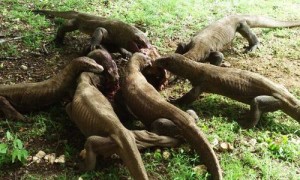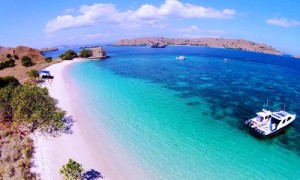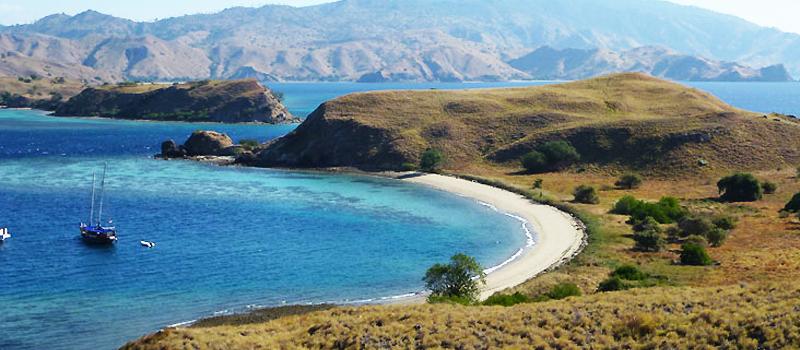World Heritage Site
Komodo National Park was established in 1980 and was declared a World Heritage Site and a Man and Biosphere Reserve by UNESCO in 1986, both indications of the Park’s biological importance.
The park was initially established to conserve the unique Komodo Dragon and its habitat, first discovered world in 1910. Since then conservation goals have expanded to protecting its entire biodiversity, both marine and terrestrial.
The majority of the people in and around the Park are fishermen originally from Bima on the island of Sumbawa, and from Manggarai, South Flores, and South Sulawesi. Those from South Sulawesi were originally nomadic and moved from location to location in the region of Sulawesi to make their livelihoods.
Descendants of the original people of Komodo still live in Komodo, but there are no pure blood people left and their culture and language is slowly being integrated with the recent migrants.
Little is known of the early history of the Komodo islanders. They were subjects of the Sultanate of Bima, although the island’s remoteness from Bima meant its affairs were probably little troubled by the Sultanate other than by occasional demand for tribute.

Komodo Dragons

Pink Beach
Flora and Fauna
The number of terrestrial animal species found in the Park is not high, but the area is important from a conservation perspective as some species are endemic. Many of the mammals are Asiatic in origin. Several of the reptiles and birds are Australian in origin. These include the orange-footed scrubfowl, the lesser sulpher-crested cockatoo and the nosy friarbird.
The most famous of Komodo National Park’s animals is the Komodo Dragon (Varanus komodoensis). It is the world’s largest living lizard and can reach 3 metres or more in length and weigh over 70kg.
Other animals include the Timor deer, the main prey of the Komodo dragon, wild horses (kuda liar), water buffalo, wild boar (babi liar), long-tailed macaques, palm civets, the endemic Rinca rat (tikus besar Rinca), and fruit bats.
Also beware of the snakes inhabiting the island, including the cobra and Russel’s pit viper, both of which are extremely dangerous.
As far as the marine fauna is concerned, Komodo National Park includes one of the world’s richest marine environments. It consists of over 260 species of reef building coral, 70 different species of sponges, crustaceans, cartilaginous (incl. manta ray and sharks) and over a 1,000 different species of bony fishes (over 1,000 species), as well as marine reptiles (incl. sea turtles), and marine mammals (dolphins, whales, and dugongs).

